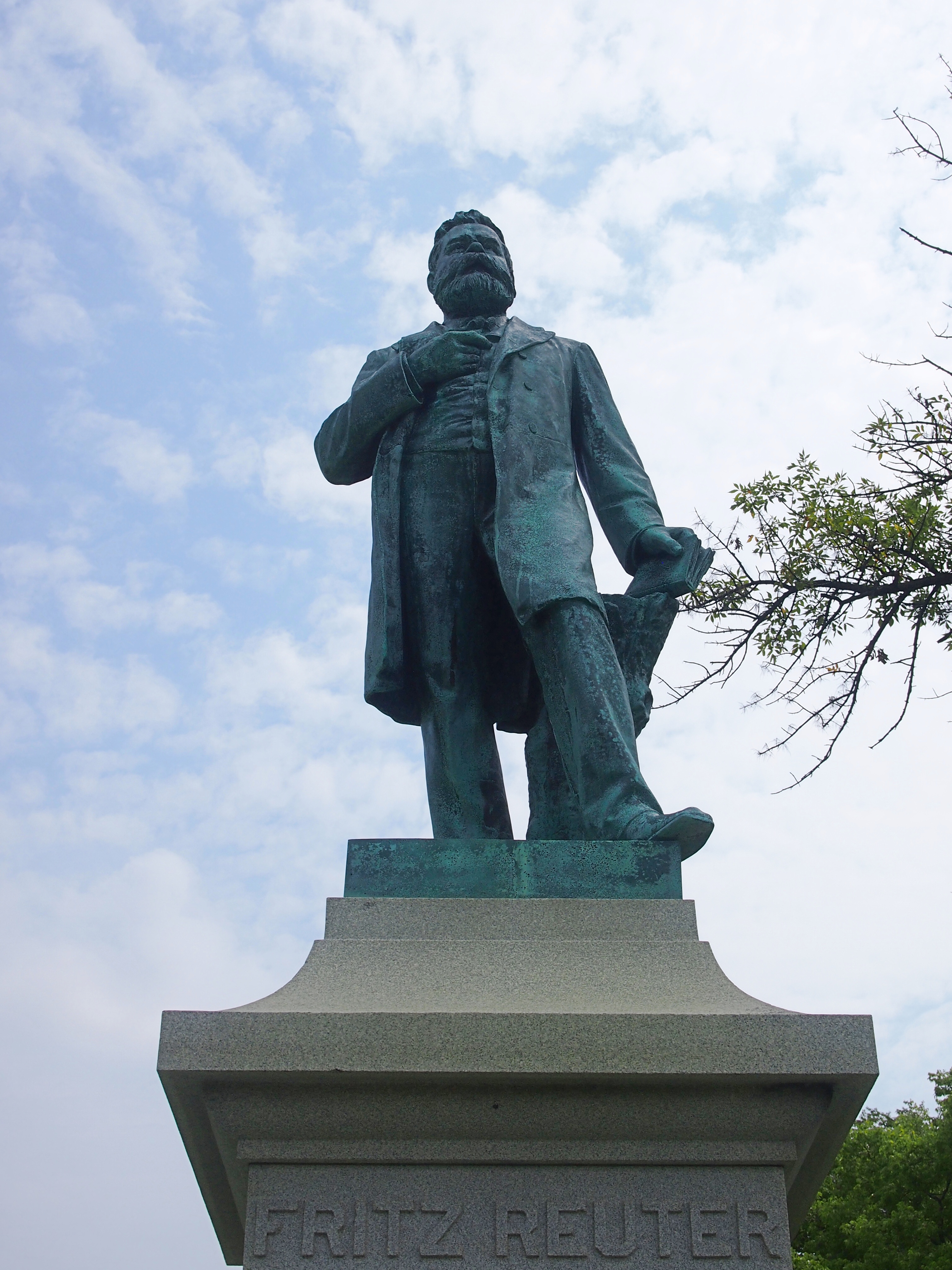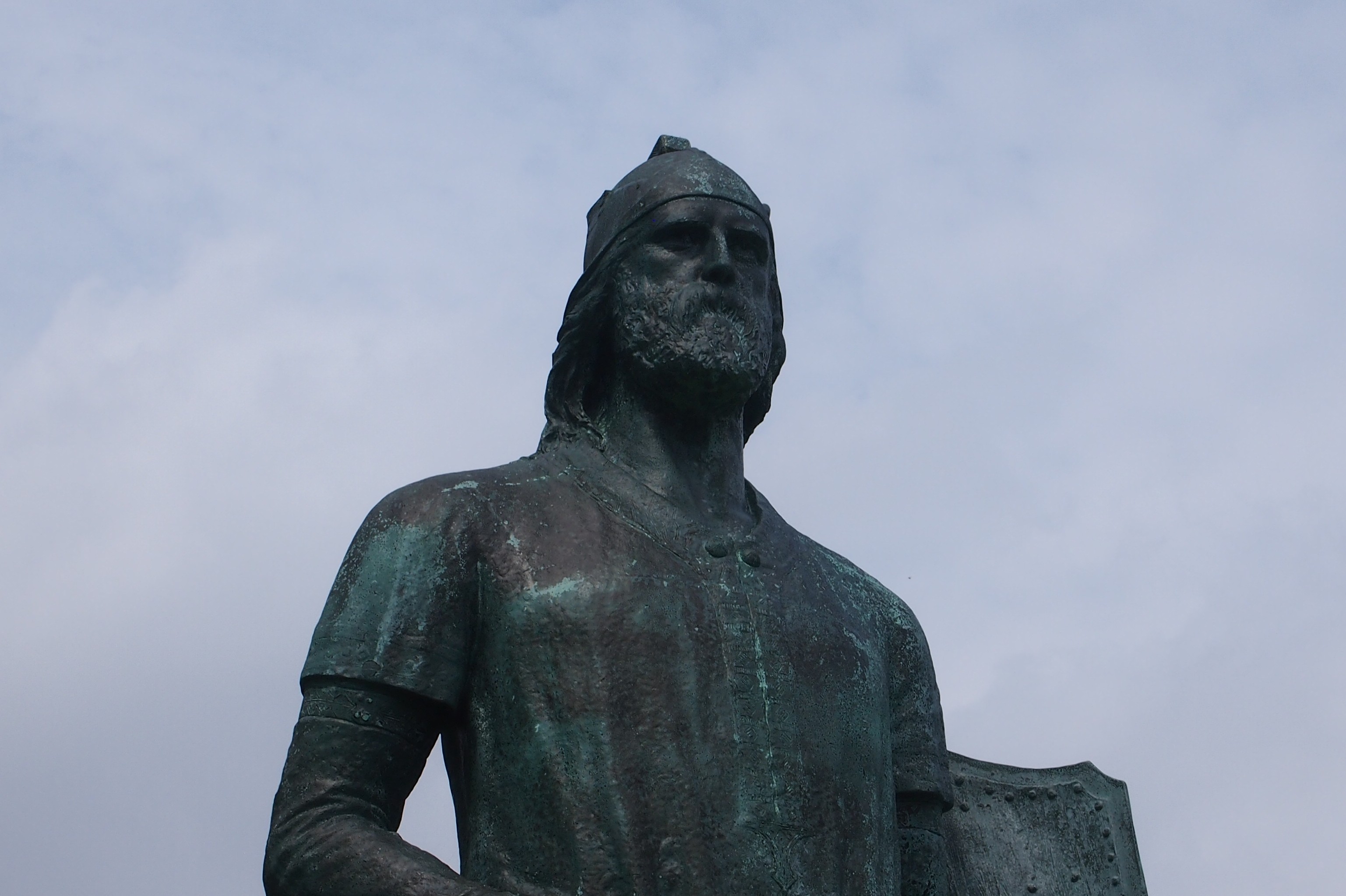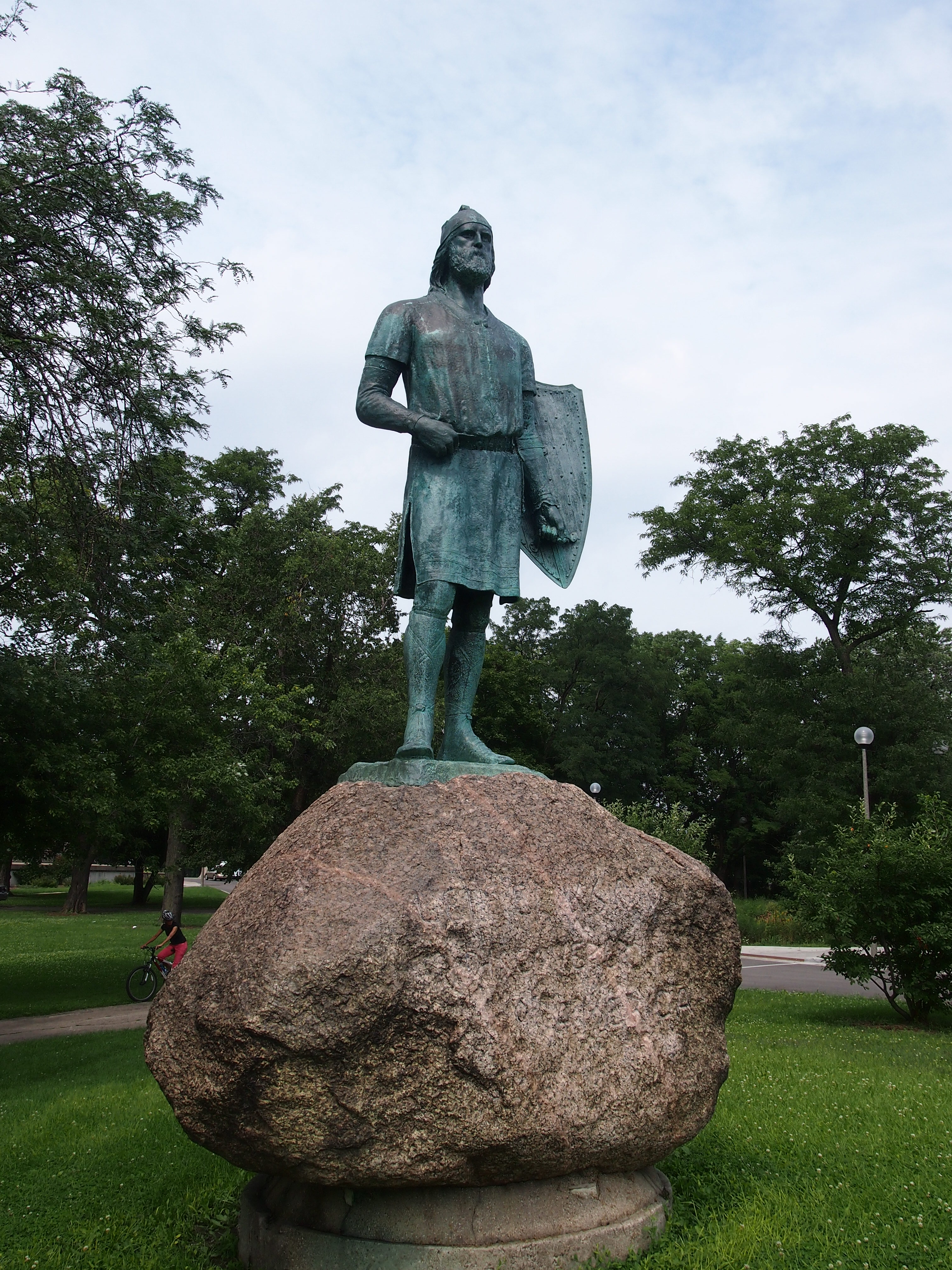As you’d expect, there’s a statue of Baron von Humboldt in Humboldt Park in Chicago, and it’s a good one, a ten-foot bronze by Felix Gorling. He’s standing next to a globe and an iguana. I like those details. But by the time I got there, my camera’s battery was exhausted – the modern equivalent of running out of film. Public Art in Chicago always features better pictures anyway, so here’s Humboldt.
The baron and I go back a ways. I did a report on him in the fifth or sixth grade. His science is impressive, but what I think really impressed me at the time, and still does, was how he successfully explored parts of South America without much in the way of modern equipment (though I guess what he had was state-of-the-art).
Also in Humboldt Park – another legacy statue of the long-gone German population in the area – is a bronze of Fritz Reuter by one Franz Engelsman. My knowledge of Fritz Reuter is meager, and at first I confused him with the fellow who started the news agency (Paul Reuter, as it happens).
 The park district tells us that “Reuter is best known for Otto Kanellen, a volume of prose stories. But he is also remembered for writing against political oppression, a subject he understood first-hand. The Prussian government sentenced Reuter to death for high treason because he had participated in a student-run club promoting political activism. This was commuted to imprisonment, and despite poor health, Reuter continued to write throughout his years in prison. Reuter’s work included several comic novels that were popular with many of Chicago’s German immigrants.
The park district tells us that “Reuter is best known for Otto Kanellen, a volume of prose stories. But he is also remembered for writing against political oppression, a subject he understood first-hand. The Prussian government sentenced Reuter to death for high treason because he had participated in a student-run club promoting political activism. This was commuted to imprisonment, and despite poor health, Reuter continued to write throughout his years in prison. Reuter’s work included several comic novels that were popular with many of Chicago’s German immigrants.
“On May 14, 1893, more than 50,000 Chicagoans of German descent attended the dedication ceremonies. While Reuter is less well-known to the wider community than Goethe or Schiller—for whom monuments were also dedicated in Chicago parks—the impressive attendance at this dedication shows the great enthusiasm for Fritz Reuter within the city’s German community. Four bronze relief plaques of scenes from Reuter’s best known works originally ornamented the granite base of the monument; however, they were all stolen in the sometime in the 1930s and have never been recovered.”
Germans weren’t the only ones living near Humboldt Park more than 100 years ago. More from the park district: “On October 12, 1901, tens of thousands of flag-waving Scandinavian-Americans participated in events to celebrate the monument’s unveiling. Despite heavy rain that day, the festivities included a parade and a two-hour ceremony in Humboldt Park.”
The monument this time: a bronze of Leif Ericson on a granite bolder, the work of a Norwegian come to Chicago around the time of the world’s fair, Sigvald Asbjørnsen.
 A determined “We’re off to Vinland, men!” look on his face? Maybe. Sure, among Europeans, he got to America first, not counting nameless Vikings who may or may not have been shipwrecked there. If I’m ever out that way, I’ll definitely take a look at L’Anse Aux Meadows. But it’s a historical curiosity more than anything else, and this kind of memorial speaks more of modern ethnic pride than anything else. Even if the Vikings had told anyone else, which they didn’t, what could have 11th-century Europe done with that information?
A determined “We’re off to Vinland, men!” look on his face? Maybe. Sure, among Europeans, he got to America first, not counting nameless Vikings who may or may not have been shipwrecked there. If I’m ever out that way, I’ll definitely take a look at L’Anse Aux Meadows. But it’s a historical curiosity more than anything else, and this kind of memorial speaks more of modern ethnic pride than anything else. Even if the Vikings had told anyone else, which they didn’t, what could have 11th-century Europe done with that information?
